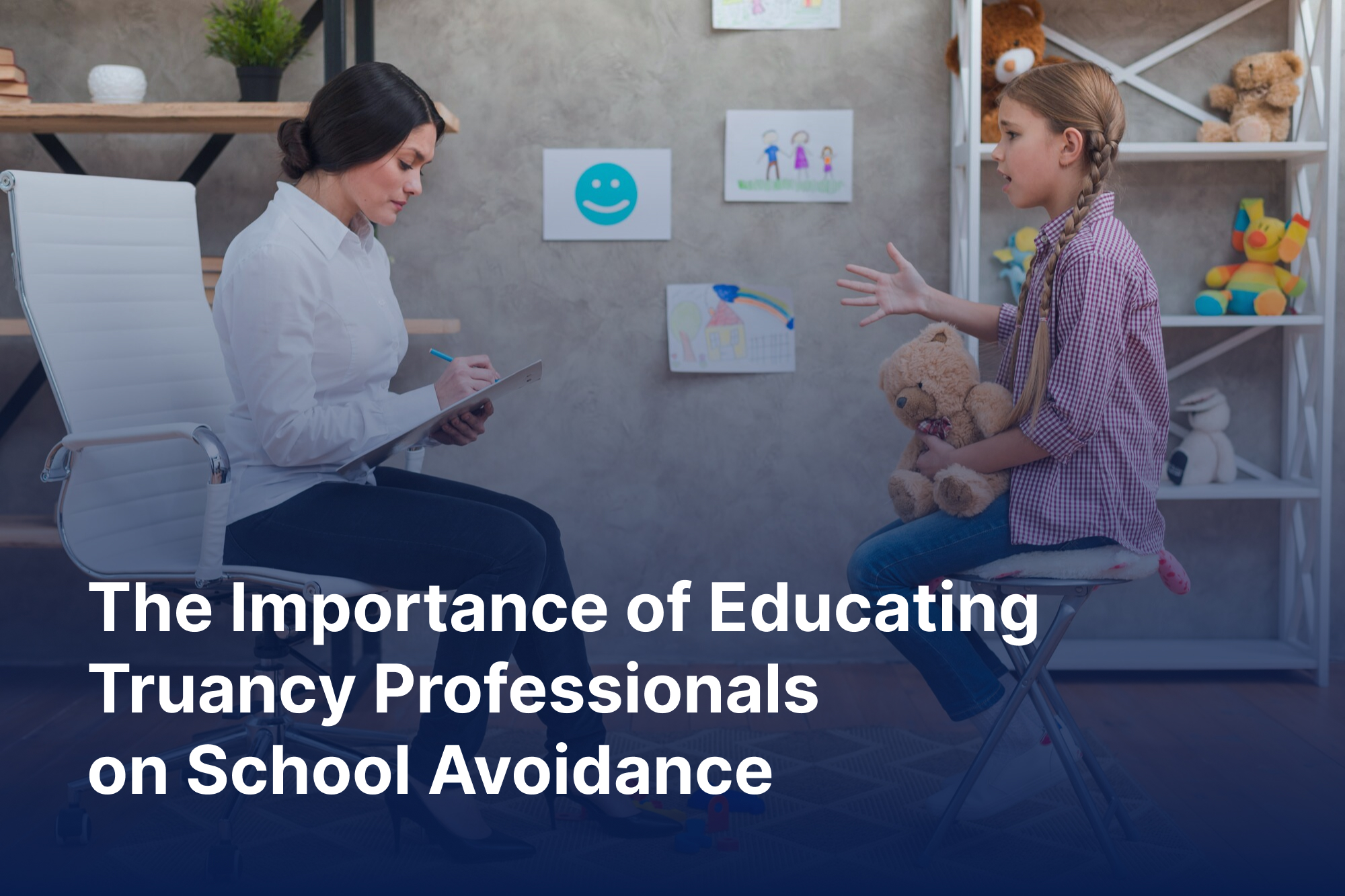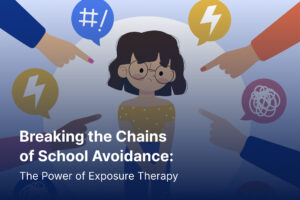Why you should prioritize educating your staff on school avoidance
Providing your school team with a comprehensive education on school avoidance is foundational and essential to improving your attendance and outcomes.
- Your role as a school team in early identification and intervention is crucial. Your proactive approach allows for effective support at the early signs of school avoidance.
- You can utilize your Intervention team (Response to Intervention) to prevent chronic absenteeism and improve outcomes.
- Creating a positive school climate and culture is not just a goal but a necessity. Your responses to school avoidance reflect how students, families, and staff perceive your school, making it a crucial aspect of addressing this issue.
- The impact of school avoidance on overall educational outcomes is significant. Addressing this issue ensures that all students, regardless of their challenges, can access their education effectively.
Social and Emotional Consequences
The social and emotional toll of school avoidance is equally concerning. Students may experience:
- Isolation: Absenteeism can lead to a lack of peer relationships and social skills development.
- Low Self-Esteem: Struggles with school attendance can impact a student’s self-worth and confidence.
- Mental Health Issues: Ongoing avoidance can exacerbate anxiety, depression, and other mental health conditions.
This article delves into the importance of educating school teams on school avoidance, exploring its causes, impacts, and strategies for effective management.
Section 1: Understanding School Avoidance
Causes of School Avoidance
A range of factors can trigger school avoidance. Identifying causes can be complicated because co-occurring factors are often involved.
Some common causes include:
- Anxiety Disorders: Many students experience anxiety related to social situations, academic performance, or specific aspects of the school environment.
- Learning Difficulties: Students with undiagnosed or unsupported learning disabilities might avoid school due to feeling inferior in the classroom, frustration, and fear of failure.
- Bullying: Victims of bullying need quick resolution. They need to be comfortable with the plan to stop bullying and protect themselves; otherwise, they won’t feel safe returning to school
- .Learning Difficulties: Students with undiagnosed or unsupported learning disabilities might avoid school due to feeling inferior in the classroom, frustration, and fear of failure.
- Family Illness: A child may have a difficult time leaving a parent who they are worried about.
- School factors: Toxic teacher, academic expectations, unstructured school time, sensory overload, having no social or school staff connections.
- Trauma: Experiences of trauma, such as abuse or the loss of a loved one, can significantly impact a child’s willingness to attend school.
Identifying Signs of School Avoidance
Early identification is critical for effective intervention. Signs that a student might be avoiding school include:
- Frequent Complaints of Illness: Students may report headaches, stomachaches, or other physical symptoms.
- Patterns: not being able to do homework, reducing time or not seeing friends, becoming difficult to get out of bed and ready for school, taking an unusually long time getting ready for school, and forgetting to do assignments, projects, and homework when at home.
- Tardiness and Absenteeism: Patterns of arriving late or missing school entirely.
- Difficulty in Transitions: Problems moving from one school level to another (e.g., primary to middle school).
- Behavioral Changes: Withdrawal, irritability, or avoiding school-related activities and extracurriculars.
- Academic Decline: A noticeable drop in grades and classroom participation.
Section 2: The Impacts of School Avoidance
A Supportive Environment
Creating a positive school climate is not just a goal but a powerful tool for reducing school avoidance. By promoting inclusivity, valuing mental health, and engaging students, you can foster an environment that motivates and supports all learners.
- Promote that your school values your students’ mental health and explain what departments, staff, and resources you have to back that up.
- Eliminating punitive responses toward chronic absenteeism- research and real-life show that punishing students does not work.
- Promoting Inclusivity: Being purposeful and mindful of your parent and student outreach, extracurricular offerings and course selection,
- Dedication to ensuring that at least 1-2 adults in the school building know more than just a student’s name. They are ensuring that all students feel valued and included.
- Implementing Anti-Bullying Programs: Effective measures to prevent and address bullying.
- Encouraging Student Engagement: Activities and programs that make school enjoyable and rewarding.
- Child-Find awareness: Emphasize Child Find law to your staff so they understand their responsibility to notify parents and colleagues if they see a student having problems.
Individualized Support Plans
Developing personalized support plans for students at risk of school avoidance is crucial. These plans should:
- Parent collaboration: Work with the family to Identify the reasons behind a student’s avoidance. Value their input. Work together. There will be no more us vs. them.
- Build a realistic Plan: Establish an individualized reintegration plan, constantly assess, use tight communication loops and revise as needed. You are meeting the child where they are at, and vice versa.
- Provide Resources: Many kids with school avoidance have underlying causes that qualify them for 504 plans and IEPs.
Section 3: Collaborating with Parents and Guardians
Building Strong Partnerships
Effective communication and collaboration are essential in recognizing the invaluable role of parents and guardians in a student’s education. By involving them in developing and implementing support strategies, you can create a sense of shared responsibility and inclusion.
- Educate Parents: As a Tier 1 strategy, use your website to Inform them about the signs and support you have for school avoidance.
- Involve Parents: Engage them in developing and implementing support strategies.
- Be empathetic: Understanding the disruption and worry school avoidance brings to a family is challenging.
Section 4: Utilizing Technology and Data
Monitoring Attendance
Using technology to monitor attendance patterns can help identify at-risk students early. Schools should:
- Implement Attendance Tracking Systems: Use software to monitor and analyze attendance data.
- Set Alerts: Establish alerts for patterns indicative of school avoidance.
- Regular Reviews: Regularly reviews attendance data to identify trends and inform interventions.
Digital Interventions
Technology can also support interventions. Examples include:
- Communication Tools: Keeping contact with students while absent is essential. You can check out apps and platforms that facilitate communication between students and school staff. An app provides this service.
- Online Counseling: Providing virtual counseling sessions for students who struggle to attend in person. Lumatehealth.org and Instridehealth.org are examples of practices with experienced school avoidance clinicians.
- Learning Platforms: If your student is functioning well enough to do school work, offer transitional online work. Online schooling is not a long-term solution unless the parents request it.
Section 5: Case Studies and Success Stories
Real-World Examples
Real feedback
Hear some comments from students, parents, and educators about school avoidance.
.
Student:
“When my teachers said school avoidance is real, they were patient with me.”
“When I found out I have dyslexia, I started getting help.”
“Being able to do my homework and sometimes finishing tests in my study skill class.”
“My new school psychologist understands and is helping me.”
Parent:
“When the school understood school avoidance and was clearly on our side to help my son.”
“They let our therapist join our meetings and were eager to hear about school avoidance and her suggestions.”
“They kept reaching out to my child, not about academics but just checking in.”
“They are willing to work with us.”
Educators: Common feedback we hear from educators after they complete our professional learning.
“It delivered everything you said it would. It changed my way of thinking.”
“I didn’t realize our attendance letters and parent communications regarding attendance were punitive.”
” We are addressing and training our attendance clerk, who has been curt and abrasive to our families.”
“Our principal sees how his parent attendance meetings have improved since he learned about school avoidance from your course.”
“We have made progress getting some kids back.”
“We have helped get school-avoidant students to return to school.”
Conclusion
Educating the school team on school avoidance is not just beneficial; it is essential. By understanding the causes, identifying signs, and implementing effective strategies, schools can create a supportive environment that encourages regular attendance and fosters academic, social, and emotional well-being. When schools commit to addressing school avoidance and educating their staff, they can change the trajectory of students’ lives.







